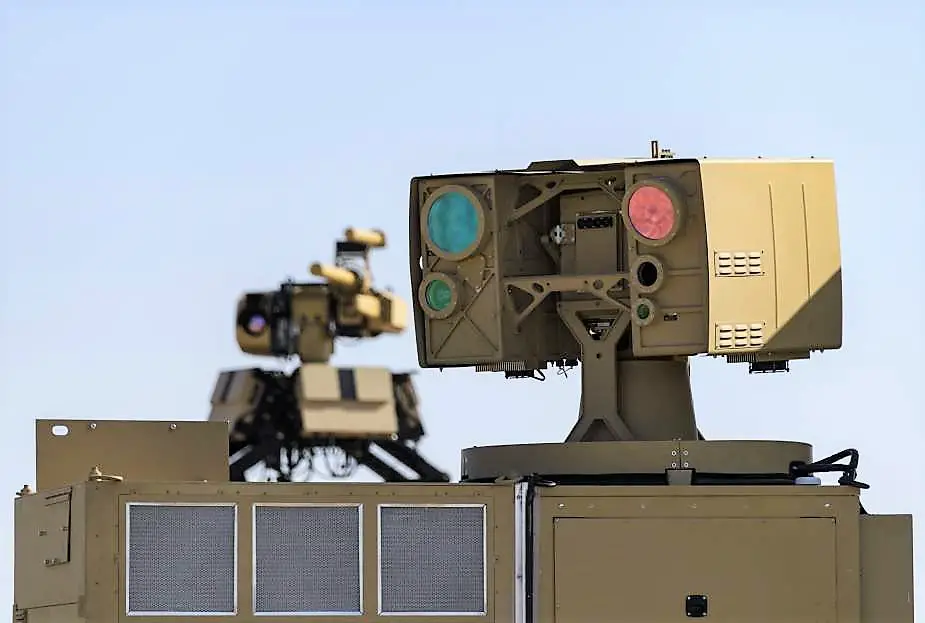With Army modernization at the forefront of the service's priorities, U.S. Army Yuma Proving Ground, known as YPG, serves as a hot spot for ongoing high-energy laser tests that can cook small, unmanned aircraft systems out of the sky. Brandon Mejia reports on U.S. Army's website.
Follow Army Recognition on Google News at this link

The Army Rapid Capabilities and Critical Technologies Office (RCCTO) in support of the Joint Counter-small Unmanned Aircraft Systems Office (JCO) continues to develop and test Counter-small Unmanned Aircraft System (C-sUAS) prototypes like the Palletized High Energy Laser (P-HEL) with the support of Yuma Proving Ground. (Picture source: U.S. Army/Brandon Mejia)
The Army Rapid Capabilities and Critical Technologies Office, in support of the Joint Counter-small Unmanned Aircraft Systems Office, continues to develop and test counter-small unmanned aircraft system prototypes like the palletized high energy laser, or P-HEL, with the support of YPG. “The laser, as part of a necessary layered set of capabilities against threat unmanned aerial systems, has tremendous potential,” said Maj. Gen. Kenneth Kamper who took part in live prototype testing of counter-small unmanned aircraft Systems at YPG in April. “There’s no doubt lasers will be on the future large scale ground combat battlefield, so it’s great to see these initial prototypes to gain understanding of its capabilities and think through where these capabilities will fit into our organization, impact how we fight, and understand how we need to adjust our doctrine.”
Packed with cameras, passive sensors, 3D detection, radar, optical systems, as well as tracking capabilities, the P-HEL is one of several prototypes that allows a commander and gunner to attack a drone or target with the laser. The system relies on high-powered energy to destroy its target instead of using traditional ammunition to shoot it out of the sky.
While the test-system itself is multifaceted so is the process for shooting a high energy laser at YPG, according to Test Officer Riley Sinek. “The P-HEL took the [Joint Counter-small Unmanned Aircraft Systems] program office, the [Rapid Capabilities and Critical Technologies Office] program office, YPG, the Federal Aviation Administration and the Laser Clearing House all to make sure one test can function safely and successfully,” Sinek explained.
The Federal Aviation Administration, or FAA, controls air traffic outside of YPG’s restricted airspace and the Laser Clearing House, or LCH, works in conjunction with the satellites that are in space.
From a test officer perspective, Sinek said its important they make sure the laser is leaving the atmosphere at 60,000 feet, in coordination with the FAA to ensure the laser energy is leaving above public airspace and “keeping our pilots and public air traffic safe.”
The geodetics support group works to conduct analysis needed for high powered laser tests. Using geodetic surveys — land surveys that account for the curvature of the Earth — they can ensure lasers are leaving the airspace at the minimum requirement.
While working with lasers has its hazards, one hazard in particular a test officer must consider is when the laser beam is fired. “As the beam diverges the power density in the beam size will eventually get to a less hazardous level but essentially the energy is going to continue until it hits something,” Sinek said.
That’s where coordination with the LCH comes into play, allowing windows for the laser to lase at certain times based on satellite locations, so no satellites are hit as the beam continues its path of travel. “Between our [YPG] large ground and our large airspace it really helps us accommodate this type of testing,” Sinek explained. “And with high power lasers, we are able to cook [unmanned aircraft systems] out of the sky when it works.”














